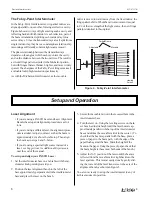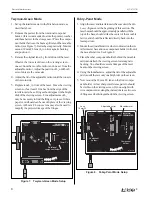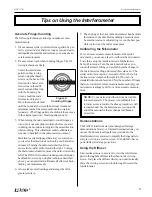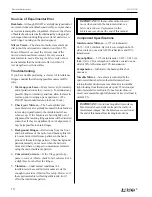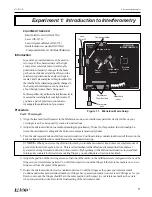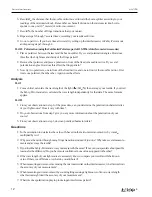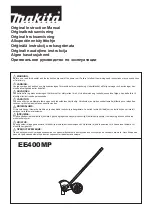
Precision Interferometer
012-07137B
20
®
Experiment 1: Introduction to Interferometry
Teacher's Guide
Reference to – Analysis (Part II)
1.
The laser we used was unpolarized, and does not seem
to change polarization with time.
2.
No, there was no change. This would support our
hypothesis that the laser used was unpolarized.
3.
Cross-polarized beams do not interfere.
Answers to – Questions
1.
The change in path length is twice the movement of the
mirror.
2.
Measuring only many fringes, many times, decreases
the chance of random error affecting our results.
3.
They were roughly the same. The Fabry-Perot
measurement could instill more confidence, because the
fringes are sharper and easier to count.
4.
The difference is probably due to our uncertainty in
measurement.
5.
Limiting factors are play in the system and uncertainty
in our micrometer position.
6.
Losing count of fringes, and inexact positioning of the
fringes relative to our reference mark.
7.
In order to interfere, the two light beams must have the
same polarization.
Part I – General
Dm
wavelength
Michelson
1.60 x 10
–5
640.0 x 10
–9
1.60 x 10
–5
640.0 x 10
–9
1.60 x 10
–5
640.0 x 10
–9
Fabry-Perot
1.60 x 10
–5
640.0 x 10
–9
1.50 x 10
–5
600.0 x 10
–9
1.55 x 10
–5
620.0 x 10
–9
average:
630.0 x 10
–9
±16.7 x 10
–9
actual:
632.8 x 10
–9
% diff.
0.44%
Part II – General
1.
The pattern became somewhat dimmer, due to
absorbtion by the polarizer; but other than that, there
was no variation when we polarized the light coming
into the interferometer.
2.
Adding a polarizer in front of the movable mirror had
little effect. The contrast of the interference pattern
reduced, and the pattern rotated when the polarizer was
rotated.
3.
There was no pattern unless the two polarizers were in
the same orientation.

